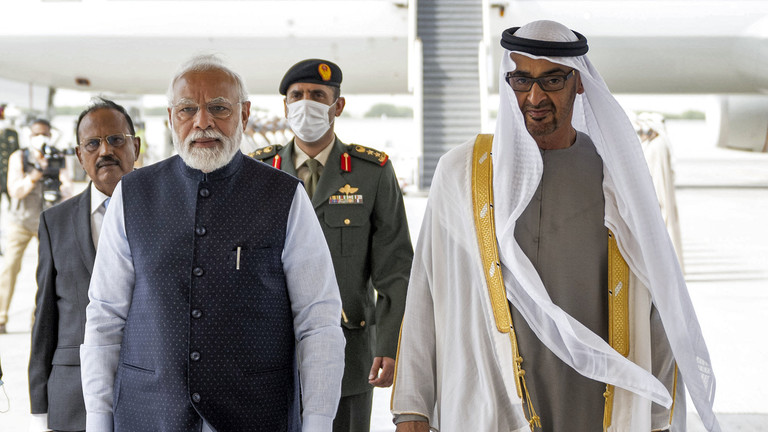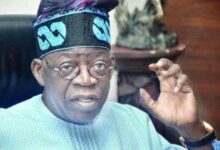
New Delhi and Abu Dhabi have set a target for bilateral non-hydrocarbon trade of $100 billion by 2030
Indian Prime Minister Narendra Modi is visiting the oil-rich United Arab Emirates (UAE) on Saturday as the countries look to boost economic cooperation in the energy and infrastructure sectors. The PM is slated to meet with the UAE president and the ruler of Abu Dhabi, Sheikh Mohamed bin Zayed Al Nahyan, along with other senior leaders. This is Modi’s fifth trip to the nation since he was elected in 2014.
Discussions are likely to center on cooperation on global issues, considering that India holds this year’s G20 presidency and will be hosting the upcoming summit in September, where the UAE is New Delhi’s special invitee, while the UAE holds the rotating presidency of the UN Climate Change Conference, which will be held in Dubai from November 30 to December 12. Talks are also likely to focus on infrastructure projects in the Middle East, as India and the UAE along with the US and Saudi Arabia are planning to jointly develop a comprehensive rail network in the region.

Indian Foreign Secretary Vinay Mohan Kwatra told a media briefing on Wednesday that “The India-UAE Comprehensive Strategic Partnership has been steadily strengthening and the visit will be an opportunity to identify ways to take this forward in various domains such as energy, education, healthcare, food security, fintech, defense and culture.”
Bilateral trade between the two nations got a major boost in February last year after India and the UAE signed the Comprehensive Economic Partnership Agreement (CEPA), which came into effect in May. The CEPA has delivered benefits for both countries, including greater market access, lower or eliminated tariff rules, simpler customs procedures, clear and transparent rules, and rule-based competition. Several labor-intensive industries such as oil seeds and oils, beverages, cotton, fish and fish products, textiles, clothing, gems and jewelry, leather, footwear, pharmaceuticals, and other engineering products have been direct beneficiaries of the pact.
Bilateral non-oil trade has reached $50.5 billion, a 5.8% annual increase, in the first 12 months since the signing of the CEPA, government data showed. Last month, Indian Commerce Minister Piyush Goyal announced that bilateral trade in non-petroleum products is likely to reach $100 billion by 2030.
The UAE has emerged as the fourth largest investor in India during 2022-23, according to figures from the Indian Department for Promotion of Industry and Internal Trade (DPIIT), which showed a three-fold jump from $1.03 billion to $3.35 billion. India is the UAE’s second-largest trading partner after the US, accounting for 9% of its total foreign trade and 14% of non-oil exports.
The UAE provides employment to over 3.5 million Indians and is a major source of remittance inflow for India. Last year, Prime Minister Modi made a stopover in the UAE, while returning from the G7 Summit in Germany. He met with President Al Nahyan to express condolences on the passing of former president Sheikh Khalifa bin Zayed Al Nahyan in May last year. RT









